-
Upper Rio Grande to experience growing gap between water supply and demand
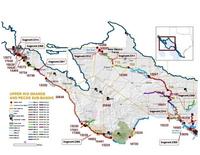
Increasing temperatures and changes in the timing of snowmelt runoff could impact the amount of water available on the upper Rio Grande in the future, says a news study. Temperatures will increase four to six degrees Fahrenheit by the end of the twenty-first century, according to the climate modeling used in the study. Although the modeling projects that total annual average precipitation in the basin will not change considerably, we are likely to see a decreasing snowpack, an earlier and smaller spring snowmelt runoff and an increase in the frequency, intensity and duration of both droughts and floods.
-
-
Survey of deep-sea chemical munitions dump off California finds no chemical weapons

Since the Second World War, U.S. nautical charts have shown seven “chemical munitions dumping areas” along the Pacific Coast between San Francisco and the Mexican border. Little or no information, however, is available about the amount, location, or nature of the materials that were dumped at most of these sites. Researchers from the Monterey Bay Aquarium Research Institute (MBARI) conducted a detailed survey of one supposed deep‐water dump site off Southern California, and found that it contained no chemical munitions. The researchers conclude that not all sites marked as chemical munitions dumps may actually have been used for this purpose.
-
-
India-Pakistan nuclear war would lead to world-wide famine: study
An India-Pakistan nuclear war may see the use of about 100 Hiroshima-size bombs – about half of India and Pakistan’s nuclear arsenals. A new study says that a nuclear exchange on such a scale would “probably cause the end (of) modern industrial civilization as we know it” by subjecting about two billion people to the risk of starvation, and causing massive economic and social disruptions far away from the theater of war. Among the consequences of a nuclear exchange: Chinese winter wheat production could decline by 50 percent during the first year and by more than 30 percent over ten years; there would be a 21 percent decline in Chinese middle-season rice production during the first four years and an average 10 percent decline in the following six years; corn and soybean production in the United States would decline by 10 percent on average for ten years.
-
-
Food security and self-provision of major cities
Wealthy capital cities vary greatly in their dependence on the global food market. The Australian capital Canberra produces the majority of its most common food in its regional hinterland, while Tokyo primarily ensures its food security through import. The Copenhagen hinterland produces less than half of the consumption of the most common foods. For the first time, researchers have mapped the food systems of capital cities, an essential insight for future food security if population growth, climate change, and political instability will affect the open market.
-
-
U.K. tightens animal disease surveillance
The U.K. Animal Health and Veterinary Laboratories Agency(AHVLA) has introduced a new surveillance system to detect new and re-emerging animal disease threats in England and Wales. The new system is expected to improve the geographical and species-specific coverage of disease.The new system will rely more on private sector laboratories for gathering surveillance intelligence and less on government laboratories.
-
-
Helping farmers cope with climate change is big business
Monsanto estimates there is a $20 billion market for employing massive data analysis to provide weather forecasting and crop-growing advice tailored to individual plots of land. With a $300 billion agriculture industry in the United States exposed to climate change, predicting the effects of warming temperature is critical to the industry. Monsanto has recently acquired – for $1 billion — the Climate Corporation, a Silicon Valley company which uses data analysis and algorithms to redefine how farmers grow and harvest crops. The company provides farmers with insights which predict weather pattern and the changing effects on crops.
-
-
Planet’s arable land rapidly degrading
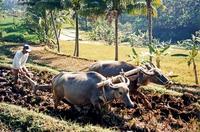
Great civilizations have fallen because they failed to prevent the degradation of the soils on which they were founded. The modern world could suffer the same fate. A new study describes how the productivity of many lands has been dramatically reduced as a result of soil erosion, accumulation of salinity, and nutrient depletion.
-
-
Rising temperatures threaten Salt Lake City’s water supply
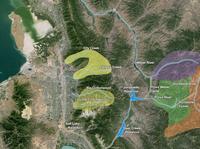
In an example of the challenges water-strapped Western cities will face in a warming world, new research shows that every degree Fahrenheit of warming in the Salt Lake City region could mean a 1.8 to 6.5 percent drop in the annual flow of streams that provide water to the city. By midcentury, warming Western temperatures may mean that some of the creeks and streams that help slake Salt Lake City’s thirst will dry up several weeks earlier in the summer and fall.
-
-
Warming will disturb nutrients balance in drylands, affecting food production
Drylands cover about 41 percent of Earth’s land surface and support more than 38 percent of the world’s population. As the world’s population grows, people will increasingly rely on marginal lands — particularly drylands — for production of food, wood and biofuels. Trouble is, an increase in aridity due to global warming will disturb the balance of nutrients in the soil and reduce productivity of the world’s drylands, a landmark study predicts. Increasing aridity is associated with a reduction in carbon and nitrogen in the soil and an increase in phosphorus.
-
-
Burping for power: Tapping cow burps for natural gas
Scientists in Argentina have developed a method to transform the gas created by cows’ digestive systems into fuel. The technique channels the digestive gases from bovine stomach cavities through a tube and into a tank, where the gases, called eruptos (burps) in Spanish, are processed to separate methane from other gases such as carbon dioxide.
-
-
More than 500 million people could face increasing water scarcity
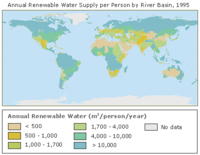
Both freshwater availability for many millions of people and the stability of ecosystems such as the Siberian tundra or Indian grasslands are put at risk by climate change. Even if global warming is limited to 2 degrees above pre-industrial levels, 500 million people could be subject to increased water scarcity.
-
-
Small changes in agricultural practices reduce produce-borne illness
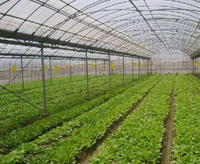
Foodborne illness sickens an estimated 9.4 million and kills around 1,300 annually in the United States, according to the Centers for Disease Control and Prevention. Produce accounts for nearly half the illnesses, and 23 percent of the deaths. Researchers have identified some agricultural management practices in the field that can either boost or reduce the risk of contamination in produce from two major foodborne pathogens: salmonella, the biggest single killer among the foodborne microbes, and Listeria monocytogenes.
-
-
Innovative salmonella sensing system
Foodborne illnesses making one in six Americans — or forty-eight million people — sick each year. Of these people sickened, 128,000 end up in the hospital, according to the Centers for Disease Control and Prevention, while 3,000 die. A new approach to detecting food contamination enables real-time testing of food and processing plant equipment.
-
-
One in 2,000 people in the U.K. carry mad cow disease proteins
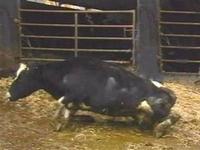
Variant Creutzfeldt-Jakob disease (vCJD) is a degenerative brain disease — often called the human form of bovine spongiform encephalopathy (BSE) or “mad cow disease.” It emerged after widespread exposure to BSE prions in the late 1980s and early 1990s through contaminated meat products in the food chain. Around one in 2,000 people in the United Kingdom may carry variant CJD proteins, concludes a large scale survey published on BMJ.
-
-
Innovative device speeds up food-pathogen detection
Researchers have developed a system that concentrates foodborne salmonella and other pathogens faster than conventional methods by using hollow thread-like fibers that filter out the cells, representing a potential new tool for speedier detection. The machine, called a continuous cell concentration device, could make it possible to routinely analyze food or water samples to screen for pathogens within a single work shift at food processing plants.
-
- All
- Regional
- Water
- Biometrics
- Borders/Immig
- Business
- Cybersecurity
- Detection
- Disasters
- Government
- Infrastructure
- International
- Public health
- Public Safety
- Communication interoperabillity
- Emergency services
- Emergency medical services
- Fire
- First response
- IEDs
- Law Enforcement
- Law Enforcement Technology
- Military technology
- Nonlethal weapons
- Nuclear weapons
- Personal protection equipment
- Police
- Notification /alert systems
- Situational awareness
- Weapons systems
- Sci-Tech
- Sector Reports
- Surveillance
- Transportation
Advertising & Marketing: advertise@newswirepubs.com
Editorial: editor@newswirepubs.com
General: info@newswirepubs.com
2010-2011 © News Wire Publications, LLC News Wire Publications, LLC
220 Old Country Road | Suite 200 | Mineola | New York | 11501
Permissions and Policies
Editorial: editor@newswirepubs.com
General: info@newswirepubs.com
2010-2011 © News Wire Publications, LLC News Wire Publications, LLC
220 Old Country Road | Suite 200 | Mineola | New York | 11501
Permissions and Policies
